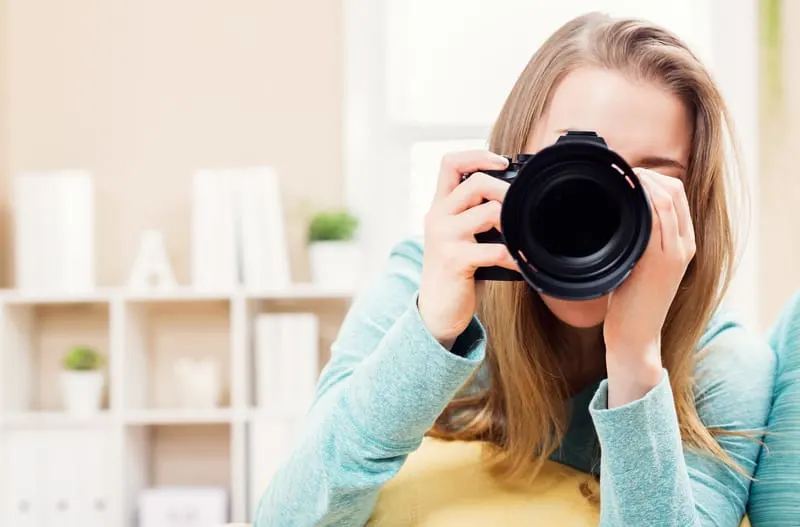How Many Images Should You Use in a Post?


Updated September 2023
A frequent question we’re asked by Mediavine publishers is how many images you should run in a particular post.
Short answer: As many as you possibly can.
Okay, that was lame. We can do better:
As many as your content will justify.
Okay, still lame, but the takeaway is that we can’t tell you a one-size-fits-all number. Every site is different and each type of content is going to justify a different number of images.
What we can tell you is that as long as you’re providing the best user experience, there is no limit to the number of photos you should run. The final total should be determined by the content you’re creating and the images you’re producing or licensing.
So aim big. While we generally recommend a minimum of 4-6 images for long-form content, the goal should always be as many as you can.
Why are images so important? Let’s break down the primary reasons:
As an ad management company, we’re going to lead with revenue. Running more photos in a post is going to increase your RPM, plain and simple.
Mediavine automatically places ads in your content to preserve user experience and based upon the industry-leading standards set by the Coalition for Better Ads.
Put another way: When we’re asked how many ads does Mediavine run, our answer is as many as your content justifies. We measure the amount of content you produce and insert ads accordingly based on the settings you control in your Mediavine Dashboard.
They say a picture is worth a thousand words. Not quite the case when it comes to Mediavine’s in-content ad logic, but it can definitely be worth several sentences of words.
Bottom line: You’ll be able to serve more ads to users without disrupting your user experience by including more images, for the simple reason that they occupy more space than text.
Longer, photo-heavy posts also have the advantage of improving the performance of “sticky” ads, including both desktop and mobile adhesion units and the sticky sidebar.
Increasing the number of images means adding more “height” to your content, keeping users on the page longer and allowing sticky ads more time to refresh.
Every time a sticky ad refreshes, you get paid for an additional ad impression. Every second counts, and additional images can be amazing for optimizing performance.
But as we like to say, ads are just the beginning at Mediavine. You won’t just make more money per post from running more pictures; you’ll also generate more traffic.

Google and other search engines love images.
In fact, Google has its own image search engine, Google Images. We know you’re familiar with that, but did you know that if you’re following the SEO best practices for images, like running unique alt text, then each image has its own chance to rank in Google Images?
Ultimately, though, Google tries to follow user experience. Quantity does not automatically equal quality, so do not run photos for the sake of running more photos.
Images make for a good user experience so long as that’s your goal. Running six identical photos is not good for users, and because Google is no fool, it won’t improve monetization or SEO.
Think of it this way: If users are just scrolling past images because they’ve seen the same image the previous four times, you’re not going to get that increased time on site.
You’re also not going to be able to create unique alt text and image file names that will help your image rank well. More is more when it comes to photos, but only when called for, not to game the system.
We know that it can be tough to create a lot of unique images and it will largely depend on the types of content you’re creating and the specific topics that vary from article to article.
I’m far from a content creator, but it’s helpful to think beyond conventions that other bloggers have set. What would users who’ve never seen your content before want to see? What can help them understand your content better? How might images help facilitate that?

Craft, DIY and food blogs can post photos of each step if they’re providing step-by-step instructions for a project or recipe.
Travel bloggers can post a photo of every spot on a list of destinations they provide.
Financial bloggers can run more tables, charts and figures to enhance their content.
Obviously, that’s just a small sample of the potential ways to utilize this technique, and we’d love to hear your ideas for how to include more photos in your posts.
Beautiful images that are compressed can provide a great user experience, help with SEO and boost your RPM!
Stay up to date with the latest from Mediavine
 Brad Hagmann
Brad Hagmann
We’ve written at length about seasonality in advertising. In fact, the first of many posts I wrote for the Mediavine blog was on this very topic, nearly two years ago. …
 Miranda Wicker
Miranda Wicker
Spring has officially begun and Q2 is here. Just like temperatures will begin to rise, so, too, will revenue. (We’ll let Brad break down the numbers in his next installment …
Last month we launched a unique adventure called the Sweet Land of Money to help publishers increase their impressions and CPMs in an exciting way! Even though Q2 is quickly …